Outerwear Fit & Jacket Length Guide
At evo, we know the importance of outerwear that keeps you warm and dry, looks good, and feels great. To feel great, it must fit well. Good fitting outerwear means outerwear that fits your body type, your use, and your style. All three of these should be taken into consideration when determining which fit is best for you.
Outerwear Fit
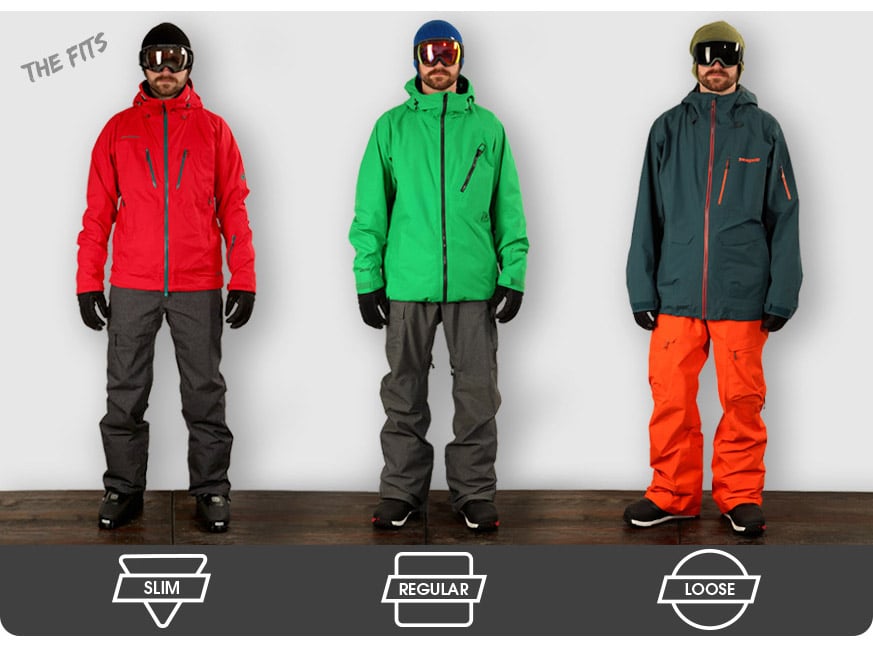
With so many outerwear brands available, and each with its own set of fits, it can be difficult to know how a jacket or pant actually fits. What one brand calls "athletic" another brand may call "baggy". You may also know or have heard of certain brands having a reputation for a tighter or a looser fit. Keep in mind that all brands change and evolve, and although some brands do tend to fit a certain way, that same brand may make a range of fits from very slim to very loose. Don't worry; we have standardized fit across the board, making it easy for you to get the right fit.
We break outerwear fit into three basic fits: Slim Fit, Regular Fit, and Loose Fit.
Slim Fit

If you can't stand the thought of your pant legs touching the ground or your jacket bunching at the chest when you bend over, then you're going to need a slim fit. With a more technical fit, you can expect:
- Outerwear is much more streamlined, promoting a wide range of motion (perfect for touring or pole-whacking).
- Jackets fit much closer to the body (sometimes limiting your layers) and have a more tailored or fitted profile, often with a waist-length cut.
- Pants are slimmer through the thigh and knee and won't go much below the ankle when standing up straight. Recent styles have begun to trend towards a slimmer leg through the knee, then flaring towards the ankle to accommodate boots.
This tighter fit, sometimes referred to as "alpinist," has a more minimalist look and feel that's grown more and more popular in the techy or fashion forward circles of our sports. You'll also find many of today's softshells and technical layers tend to be an alpine fit. Slimmer profile shredders should definitely check out some slim fitting options.
Regular Fit
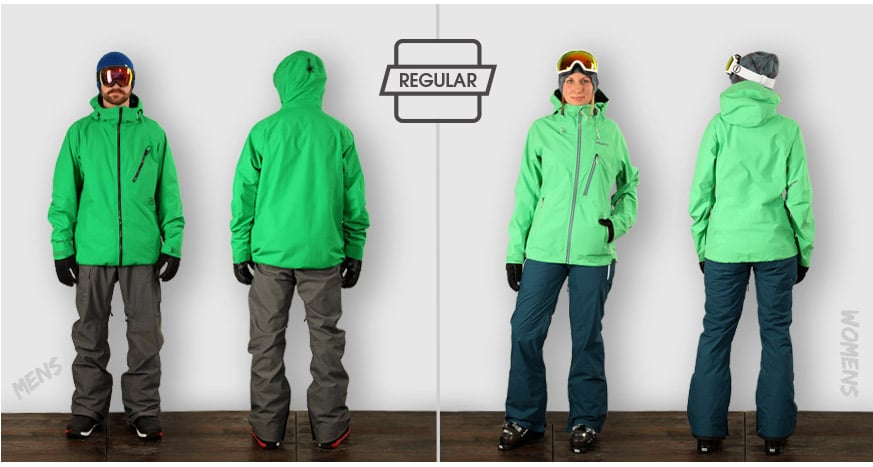
When you buy a regular fit, you're buying a product that's not too tight, not too baggy, but right in the middle. If you're a little unsure of what fits you best but have an average build, shop around for a regular fit. With a traditional fit, you can expect:
- Outerwear will have plenty of room for layering but won't look like a yeti when not wearing many layers underneath.
- Jackets will typically have a standard length that doesn't pull up past your waist line when you raise your arms, with sleeves that stay extended to your wrists when you bend your arms, but won't go too far past your hands when your arms are straight.
- Pants will have a standard inseam with a cut that's straight through the leg.
Loose fit
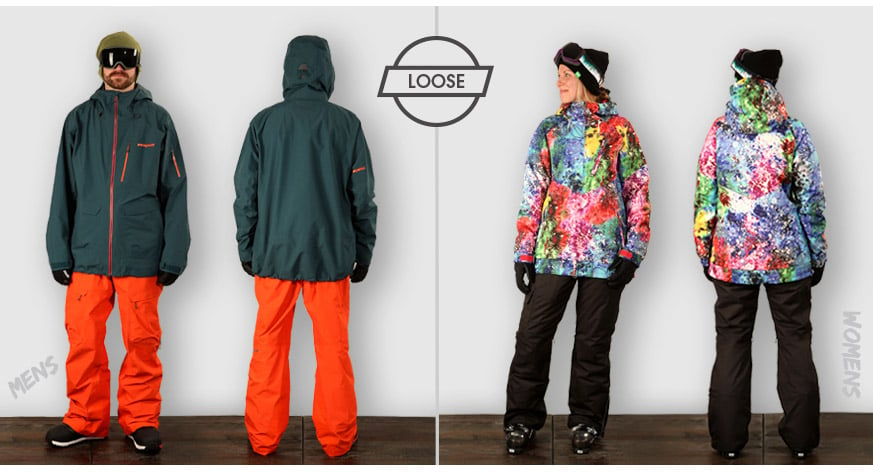
Outerwear with a baggier fit is designed to have more coverage all around, while maximizing room for layers underneath. With a baggier fit, you can expect:
- Outerwear will have extra room all over with enough coverage no matter how you twist or move.
- Jackets will have more room throughout the body and sleeves, and tend to be longer when compared to a regular or traditional fit - think sweatshirt vs. sweater.
- Pants are going to be relaxed at the waist and much roomier throughout the thigh, knee, and cuff.
- This style has become popular among park skiers and snowboarders who want a baggy look more than they care about the actual fit. Brands are now designing lines just for them. Also, brands that were known as more traditional in the past, now make fits that appeal to a newer generation seeking a more progressive fit.
Jacket Length
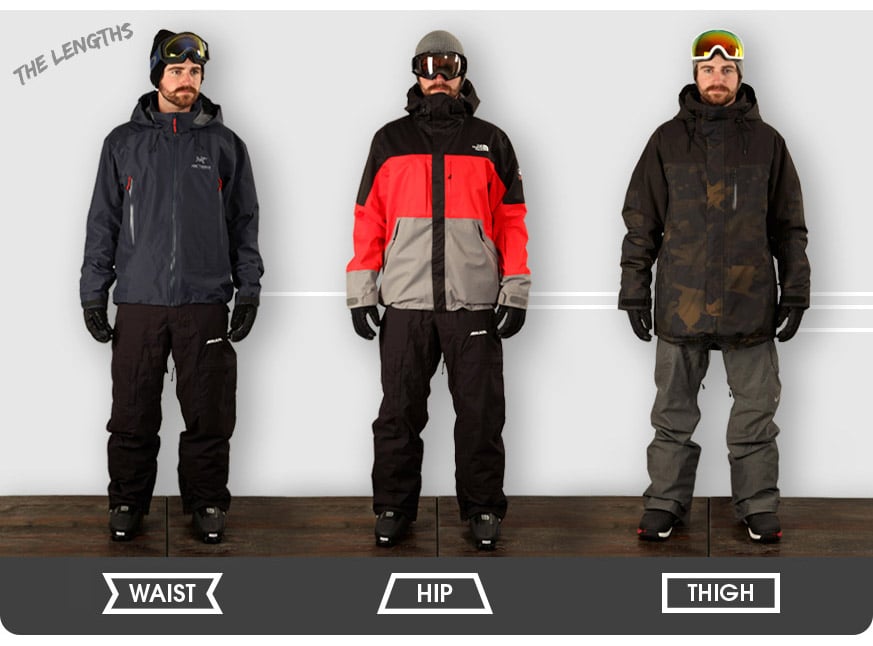
In addition to Regular, Loose, and Slim fit, we also classify jackets as Waist-length, Hip-length, and Thigh-length. Think of these as Short, Regular, and Long, respectively. These are to point out jackets with length that might not always go with the fit. For example, a jacket may be of regular fit but with additional length. Length is an important spec to consider when shopping for jackets as some body types require a jacket that is short and wide and others, one that is long and slim.
We break jacket length into three standard lengths: Waist Length, Hip Length, and Thigh Length.
Waist Length
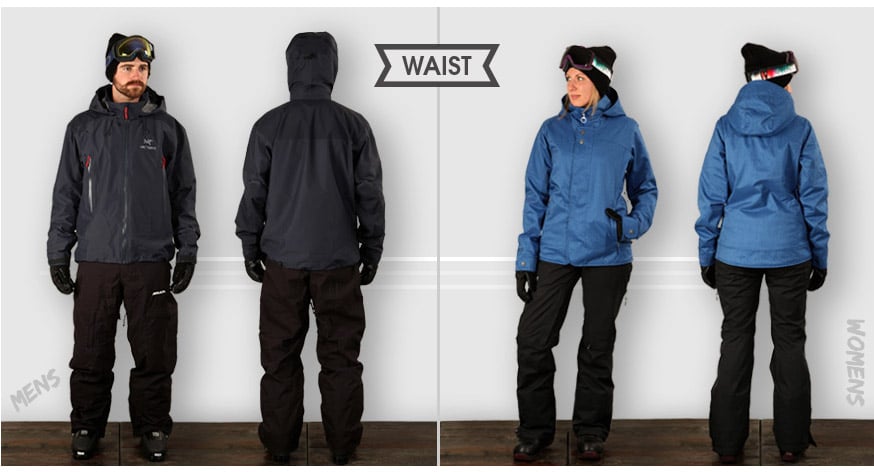
- The shortest fit we offer
- Built for precision and utility
- Popular choice for backcountry lines and touring days, where bulk and weight need to be considered
Hip Length
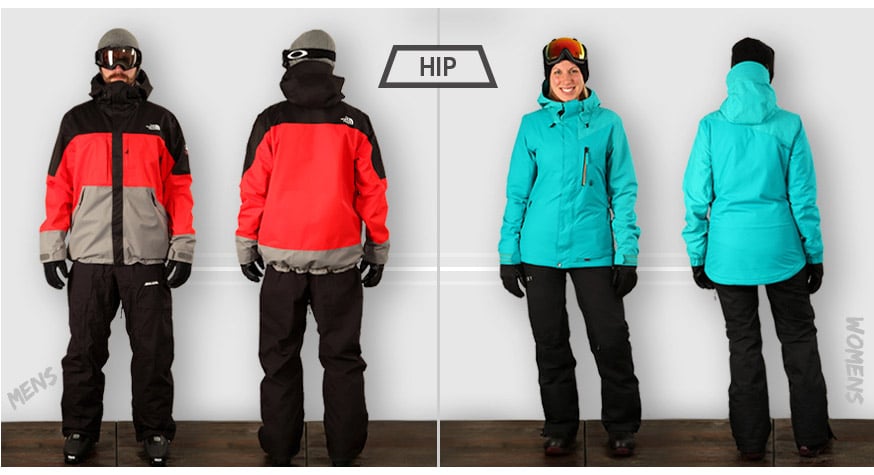
- Most common jacket length
- Provides excellent coverage without being too long
- Suitable for nearly all situations
Thigh Length
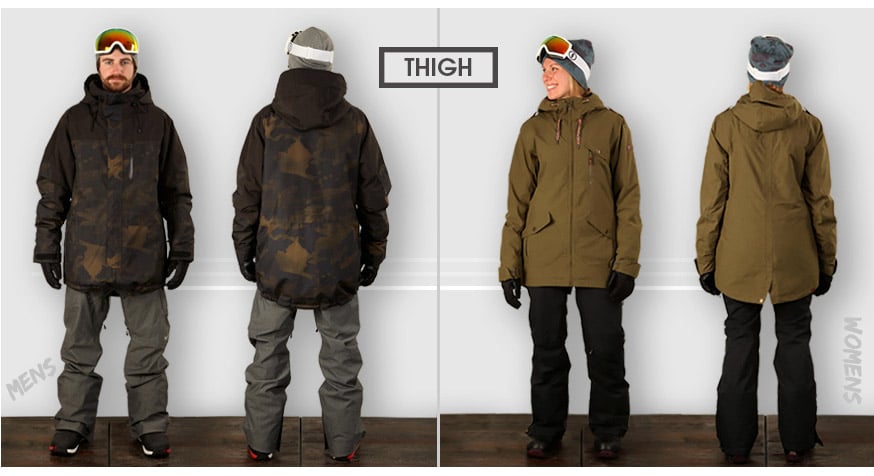
- The longest fit we offer
- Excellent coverage for keeping snow out
- Popular style for park days when you may be falling repeatedly
Long & Tall Outerwear
People come in all different shapes and sizes, so why shouldn't outerwear? More and more brands are expanding their sizing ranges to account for people with different body dimensions. As such, gear with long & tall, as well as short sizing is becoming more readily available. If you fit into one of these categories, you probably don't need us to tell you, so check out some this gear below, and find the perfect fit for you.
Learn More With Our Other Outerwear & Layering Guides:
- Waterproof Ratings & Breathability Guide
- Skiing & Snowboarding - What to Wear Skiing & Snowboarding
- Outerwear - How to Choose a Ski & Snowboard Jacket
- Outerwear - How to Choose Ski & Snowboard Pants
- Outerwear - Fit Guide & Jacket Length
- How to Wash Waterproof Jackets & Clothing
- Outerwear - How to Choose by Region
- Outerwear - Construction, Fabric & Features
- Insulated Garments - How to Choose
- Insulated Garments - How to Wash Down & Synthetic Jackets
- Base Layers & Long Underwear - How to Choose
- GORE-TEX® Fabric - How it Works & Product Testing
- GORE-TEX® Fabric - How to Wash & Keep Waterproof
- Backcountry - How to Dress
Learn About Our Favorite Gear
- The Best Men's Ski Jackets
- The Best Women's Ski Jackets
- The Best Men's Snowboard Jackets
- The Best Women's Snowboard Jackets
- The Best Kids' Ski & Snowboard Jackets
- The Best Men's Ski Pants
- The Best Women's Ski Pants
- The Best Men's Snowboard Pants
- The Best Women's Snowboard Pants
- The Best Men's Ski Bibs
- The Best Men's Snowboard Bibs
- The Best Women's Ski Bibs
- The Best Kids' Ski & Snowboard Pants
- The Best Men's Down & Puffy Jackets
- The Best Men's Ski & Snowboard Mid Layers
- The Best Men's Ski & Snowboard Base Layers
- The Best Women's Snowboard Bibs
- The Best Men's Fleece Jackets
- The Best Women's Down & Puffy Jackets
- The Best Women's Fleece Jackets
- The Best Men's Rain Jackets
- The Best Women's Rain Jackets
- The Best Men's Hardshell Jackets
- The Best Women's Hardshell Jackets
- The Best Women's Ski & Snowboard Mid Layers
- The Best Women's Ski & Snowboard Base Layers
- The Best Down Vests
- The Best Kid & Toddler Snowsuits
This is evo. We are a ski, snowboard, wake, skate, bike, surf, camp, and clothing online retailer with physical stores in Seattle, Portland, Denver, Salt Lake City, Whistler, and Snoqualmie Pass. Our goal is to provide you with great information to make both your purchase and upkeep easy.
evo also likes to travel to remote places across the globe in search of world-class powder turns, epic waves, or legendary mountain biking locations through evoTrip Adventure Travel Trips. Or, if you prefer to travel on your own, check out our ski & snowboard resort travel guides and mountain bike trail guides.
Still have questions? Please call our customer care team at 1.866.386.1590 during Customer Care Hours. They can help you find the right setup to fit your needs.